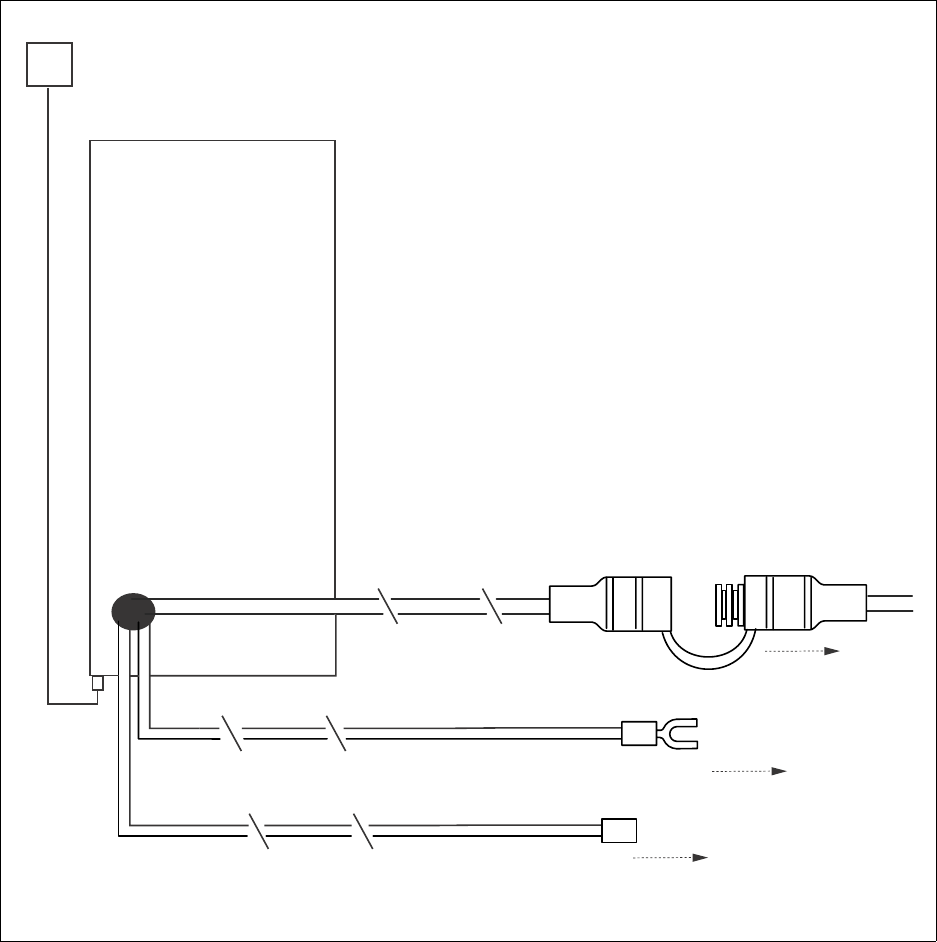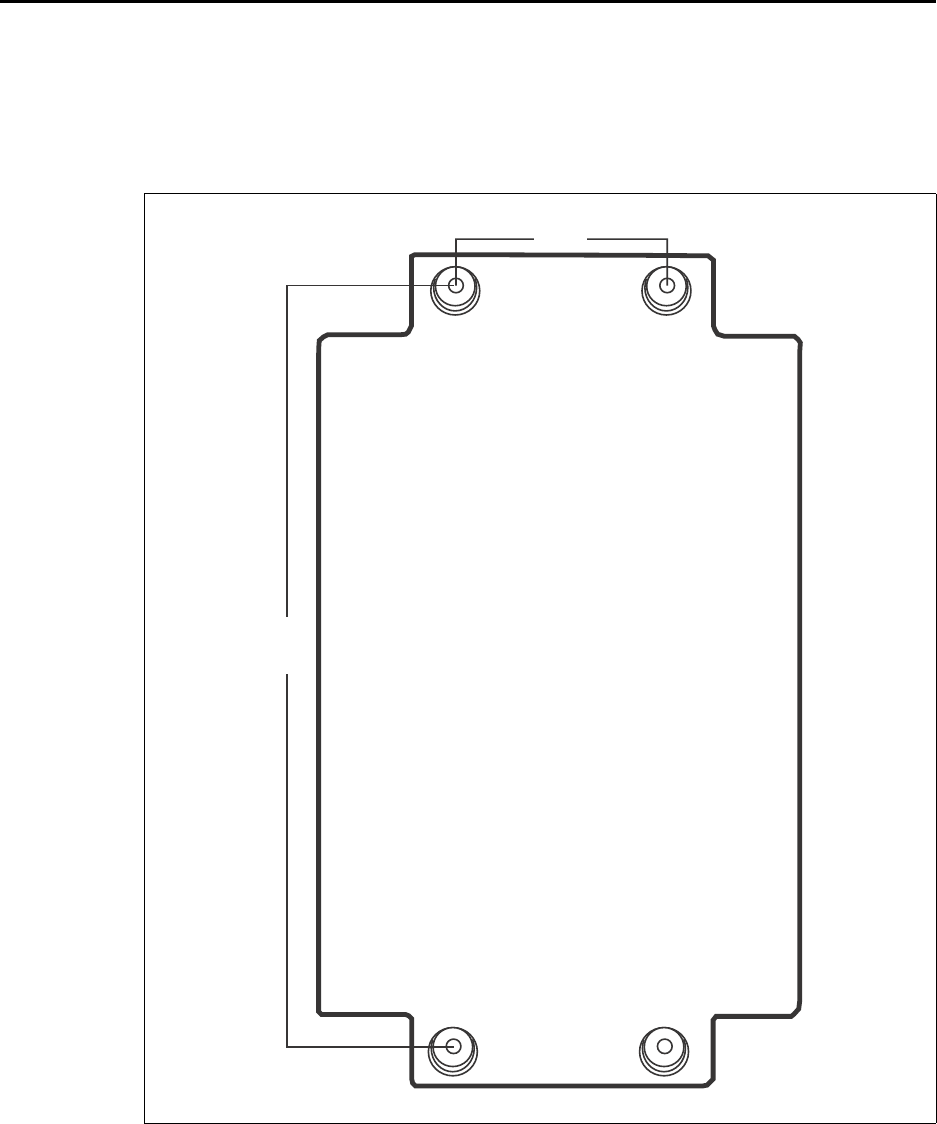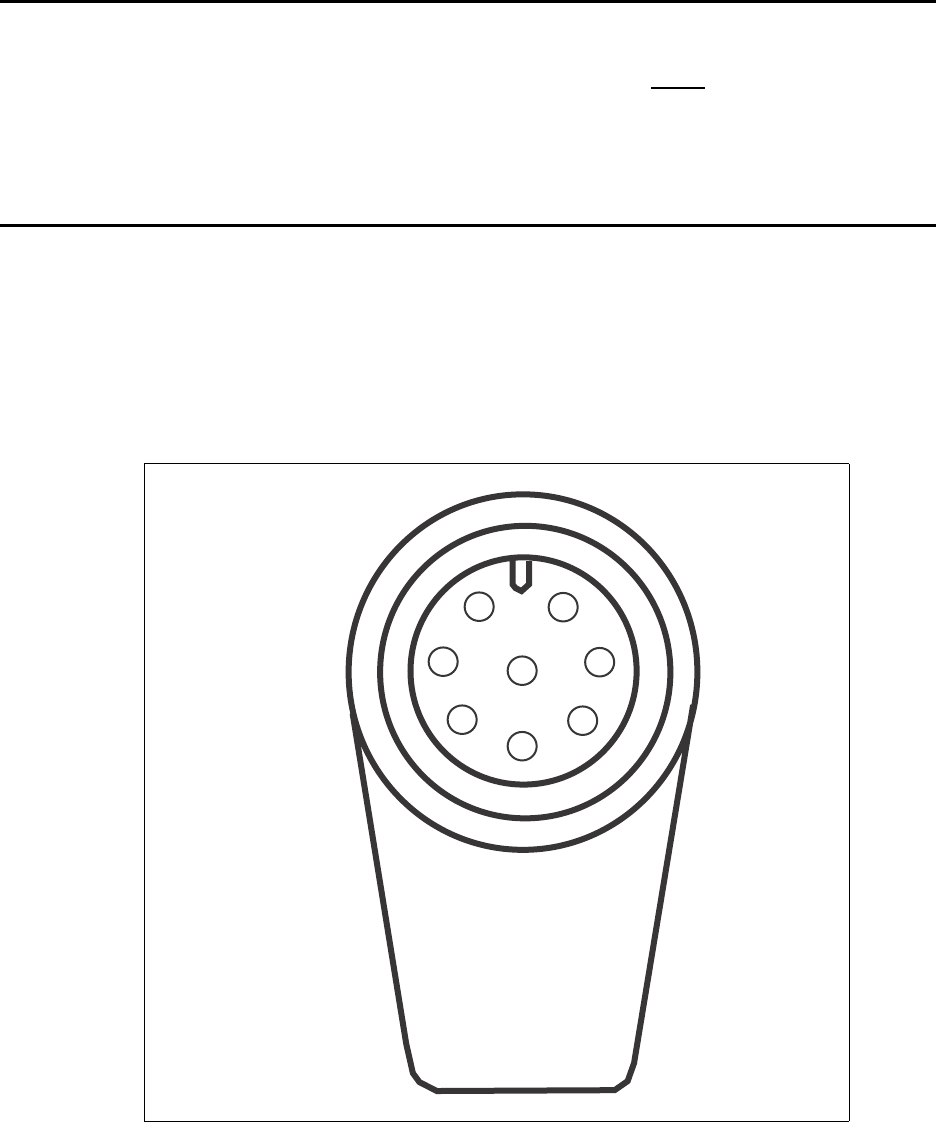Nokia Solutions and Networks MSU2510A Mobile Non Line-of-Sight Wireless Data Link User Manual MobileSub
Nokia Solutions and Networks Mobile Non Line-of-Sight Wireless Data Link MobileSub
Install and Operating Manual Ex 8

i
Installing the Mobile Subscriber
Unit
Broadband Wireless Access System
Part Number: 104-0255-0002

ii
Expedience is a trademark of NextNet Wireless, Inc.
©2005 NextNet Wireless, Inc. All rights reserved.
THE SPECIFICATIONS AND INFORMATION REGARDING THE PRODUCTS IN THIS GUIDE
ARE SUBJECT TO CHANGE WITHOUT NOTICE. ALL STATEMENTS, INFORMATION, AND
RECOMMENDATIONS IN THIS GUIDE ARE BELIEVED TO BE ACCURATE BUT ARE
PRESENTED WITHOUT WARRANTY OF ANY KIND. USERS MUST TAKE FULL
RESPONSIBILITY FOR THEIR APPLICATION OF ANY PRODUCT.
FOR WARRANTY INFORMATION ON THE EXPEDIENCE MSU, CONTACT THE INTERNET
SERVICE PROVIDER THAT SUPPLIED THE MSU. NOTWITHSTANDING ANY OTHER
WARRANTY HEREIN, ALL DOCUMENT FILES AND SOFTWARE THAT ARE PROVIDED ON
THE EXPEDIENCE BROADBAND WIRELESS ACCESS MODEM CD-ROM ARE PROVIDED “AS
IS” WITH ALL FAULTS. NEXTNET WIRELESS DISCLAIMS ALL WARRANTIES, EXPRESSED OR
IMPLIED, INCLUDING, WITHOUT LIMITATION, THOSE OF MERCHANTABILITY, FITNESS
FOR A PARTICULAR PURPOSE AND NONINFRINGEMENT OR ARISING FROM A COURSE OF
DEALING, USAGE, OR TRADE PRACTICE. IN NO EVENT SHALL NEXTNET WIRELESS OR ITS
SUPPLIERS BE LIABLE FOR ANY INDIRECT, SPECIAL, CONSEQUENTIAL, OR INCIDENTAL
DAMAGES, INCLUDING, WITHOUT LIMITATION, LOST PROFITS OR LOSS OF DAMAGE TO
DATA ARISING OUT OF THE USE OR INABILITY TO USE THIS GUIDE, EVEN IF NEXTNET
WIRELESS HAS BEEN ADVISED OF THE POSSIBILITY OF SUCH DAMAGES.
FCC information
NOTICE: This equipment has been tested and found to comply with the FCC guidelines as found in
47CFR1.1310 for Radio Frequency Radiation Exposure Limits as detailed below. A minimum of 20
centimeters (8 inches) separation between the MSU atenna and the operator and all other persons must be
maintained.
Radio Frequency Radiation Exposure Limits
f = frequency in MHz
* = Plane-wave equivalent power density
Table 1 Limits for Maximum Permissible Exposure (MPE)
Frequency range
(MHz)
Electric field
strength
(V/m)
Magnetic field
strength
(A/m)
Power
density
(mW/cm2)
Averaging
time (minutes)
(A) Limits for Occupational/Controlled Exposures
0.3-3.0 614 1.63 *(100) 6
3.0-30 1842/f 4.89/f *(900/f2)6
30-300 61.4 0.163 1.0 6
300-1500 — — f/300 6
1500-100,000 — — 5 6
(B) Limits for General Population/Uncontrolled Exposure
0.3-1.34 614 1.63 *(100) 30
1.34-30 824/f 2.19/f *(180/f2)30
30-300 27.5 0.073 .2 30
300-1500 — — f/1500 30
1500-100,000 — — 1.0 30
iii
Note: NOTE 1 to Table 1: Occupational/controlled limits apply in situations in which persons are exposed as
a consequence of their employment provided those persons are fully aware of the potential for exposure and
can exercise control over their exposure.
Limits for occupational/controlled exposure also apply in situations when an individual is transient through a
location where occupational/controlled limits apply provided he or she is made aware of the potential for
exposure
Note: NOTE 2 to Table 1: General population/uncontrolled exposures apply in situations in which the
general public may be exposed, or in which persons that are exposed as a consequence of their employment
may not be fully aware of the potential for exposure or cannot exercise control over their exposure.
Declaration of Conformity Compliance Information
Class B computer peripheral
This device complies with part 15 of the FCC Rules. Operation is subject to the following two conditions: (1)
This device may not cause harmful interference, and (2) this device must accept any interference received,
including interference that may cause undesired operation.
Responsible Party: NextNet Wireless, Inc.
9555 James Ave. South Suite 270
Bloomington, MN 55431
952-929-4008
Note: This equipment has been tested and found to comply with the limits for a Class B digital device,
pursuant to part 15 of the FCC Rules. These limits are designed to provide reasonable protection against
harmful interference in a residential installation. This equipment generates, uses and can radiate radio
frequency energy and, if not installed and used in accordance with the instructions, may cause harmful
interference to radio communications. However, there is no guarantee that interference will not occur in a
particular installation. If this equipment does cause harmful interference to radio or television reception, which
can be determined by turning the equipment off and on, the user is encouraged to try to correct the
interference by one or more of the following measures:
• Reorient or relocate the receiving antenna.
• Increase the separation between the equipment and receiver.
• Connect the equipment into an outlet on a circuit different from that to which the receiver is connected.
• Consult the dealer or an experienced radio/TV technician for help.
Note: Modification of this device may void the user’s authority to operate the equipment.

iv
v
CONTENTS
Welcome ..............................................................................................1
Installation overview ............................................................................1
Determining where to install the MSU ...............................................1
Cabling overview ...................................................................................................2
Installing the MSU inside the automobile ......................................... 3
Installing the antenna ......................................................................... 4
Antenna requirements ..........................................................................................4
Powering the MSU ............................................................................. 5
Preparing the power cable for installation ........................................................5
Attaching MSU’s power cable to the battery ....................................................5
Grounding the MSU ........................................................................... 6
Attaching the cable harness to the MSU ............................................ 6
Connecting the MSU to the computer ............................................... 7

vi

1
Welcome
This guide describes how to install and use the Expedience mobile subscriber unit (MSU).
The MSU maintains contact with base stations in order to provide wireless high-speed
Internet access to subscribers in moving vehicles, such as cars, trucks, and vans.
This guide is intended for use by professional equipment installers. Service providers should
not attempt to install the MSU.
Installation overview
This section provides an overview of the tasks you will perform when installing the MSU.
To install the MSU:
1Determine where the MSU will be mounted inside the vehicle.
2Install the antenna in the desired location.
3Run the antenna cable to where the MSU is mounted and plug the cable into the MSU.
4Determine the appropriate length for the MSU power cable.
a If using the full length of the cable, go to step 5.
b If you want to change the location of the fuse holder, cut the cable and use the crimps
to insert fuse holder at the desired location on the power cable.
5Power the MSU by preparing the cable and attaching the MSU power cable to the battery
or to an unused, positive fuse block terminal.
6Ground the MSU to a screw that goes to chassis ground.
7Connect the MSU cable harness to the connector on the back of the MSU.
8Connect the MSU to the laptop computer using the RJ-45 cable.
For further information about these tasks, refer to the sections that follow.
Determining where to install the MSU
The MSU is installed inside the vehicle. Cables on a cable harness connect the MSU to a
power source, to the frame of the vehicle for grounding, and to the subscriber’s laptop
computer. Also, a separate antenna cable connects the antenna to the TNC antenna
connector on the MSU.
When choosing a location for the MSU in the vehicle, be sure the antenna cable and the cable
harness can reach the MSU.

2Installing the mobile subscriber unit
Cabling overview
Figure 1 illustrates how the antenna connects to the MSU. It also shows how the cables
connect the MSU to a power source, to the vehicle’s frame for grounding, and to the
subscriber’s computer.
Figure 1 MSU cabling diagram
To battery
Antenna
Ground wire
MSU
Power cable
RJ-45 cable
To frame
To computer
(red wire)
(black wire)
Fuse holder

3
Installing the MSU inside the automobile
The back of the MSU is a mounting plate with 4 holes. The MSU can be mounted on an
equipment shelf in the vehicle or on the side of the automobile.
The mounting holes on the back of the MSU are vertically spaced 9 x 5/8 inches apart center
to center. The horizontal holes are spaced 3 x 1/2 inches apart.
Figure 2 shows the back of the MSU.
Figure 2 Mounting bracket on the back of the MSU
9 5/8
3 1/2

4Installing the mobile subscriber unit
Installing the antenna
You should only use the antenna that NextNet has approved for use with the MSU.
The antenna is installed on a horizontal surface on the exterior of the vehicle, usually on the
trunk or on a roof. To secure the antenna to the vehicle, you can use one of the following
mounting options:
• You can use a magnetic mount to secure the antenna to the vehicle.
• You can use a regular mount, which requires you to drill or use an existing hole through
the exterior of the vehicle.
After you install the antenna, run the antenna cable and connector to where the MSU is
installed.
Antenna requirements
This section explains which antennas can be used with the MSU.
Note: The antenna used with the MSU depends on the Effective Isotropic Radiated Power
(EIRP) requirements of the particular country in which the MSU is operated.
In the United States, the antennas approved for use with an MSU operating at 2.6 GHz are:
• The BMMG2400ML195C antenna from Maxrad, which is magnetically mounted to the
vehicle
• The IMAGO-2600 antenna from Mobilemark, which is magnetically mounted to the
vehicle.

5
Powering the MSU
You must prepare the power cable for installation before you attach the power cable to the
battery.
Preparing the power cable for installation
The power cable is 21 feet long. You must insert an 5 Amp, normal blow fuse from the
assembly kit into the power cable’s fuse holder in order to protect the MSU from power
surges.
You can use the cable at its full length, or you can cut the power cable down to the desired
length.
Installing the fuse
Install the fuse:
1Pull apart the fuse holder and push the fuse into the holder. The fuse must be a 5 Amp
normal blow fuse, AGC style.
2Push the fuse holder back together. Make sure no space appears between each half of the
fuse holder.
Using the cable at full length
To use the cable at full length:
1To prepare the cable to be attached to the battery or terminal block, strip the end of the
power cable. The red wire is then exposed.
2Coil the excess cable.
Changing the length of the cable
To change the length of the cable:
1Determine the distance from the battery or other power source to the MSU.
2Cut the power cable to an appropriate length. Use a wire crimp to crimp the end of the
inline fuse holder back onto the power cable at the desired location on the cable.
Attaching MSU’s power cable to the battery
Note: Make sure the fuse is installed on the inline cable before attaching the MSU to power.
The MSU can be powered by a regular car battery or a deep cycle battery such as a marine
battery used on a boat.
When selecting a battery, note that the MSU draws about 2 Amps of power when the MSU is
continuously transmitting data in the heaviest downlink configuration.
To power the MSU, connect it to a positive (+) battery source. Depending on the vehicle’s
battery or the availability of a fuse block, you can accomplish this by using the power cable’s
wire, a flat spade connector, or a quick disconnect connector (female connector, tab
connector).
The connectors are included in an assembly kit that ships with the MSU.

6Installing the mobile subscriber unit
Grounding the MSU
The grounding cable is 2 feet long.
On vehicles, the grounding cable must be connected to the frame (ground) of the car. For
example, it is NOT acceptable to attach the ground cable to the frame of a seat, unless the
frame also connects to chassis ground.
Attaching the cable harness to the MSU
The cable harness plugs into the lower corner of the MSU.
To plug in the cable:
1Make sure the connector on the cable harness is fully seated to the MSU connector.
2Turn the outer shell of the cable harness connector clockwise until the connector locks
into place.
Figure 3 shows the connector and its pins.
Figure 3 MSU connector
8
1
2
3
4
5
6
7

7
Table 1 describes the MSU connector’s pins.
Connecting the MSU to the computer
To connect the MSU to the computer:
1Use the RJ-45 plug on the cable harness into the RJ-45 coupler which is supplied in the
installation kit.
2Connect an RJ-45 cable from the computer into the other end of the coupler.
Figure 4 illustrates the pins for the RJ-45 connector on the cable harness.
Table 2 describes the function of the pins.
Table 1 Wiring diagram for MSU connector
Pin number Purpose
1 EN TX+
2 EN TX-
3 EN RX+
4 EN RX-
5power
6n/c
7ground
8n/c
Figure 4 Cable harness — RJ-45 connector’s pins
Table 2 Function of pins on RJ-45 connector
Pin Function
1 EN RX + (white/orange
2EN RX - (orange)
3 EN TX+ (white/green)
4n/c
5n/c
6EN TX- (green)
7n/c
8n/c
P1 P8
8Installing the mobile subscriber unit
9
A
antenna 4
B
bracket
mounting 3
C
cabling diagram for LPB 2
G
grounding
MSU 6
M
Mounting bracket for MSU 3
MSU
mounting bracket 3
MSU connector pin diagran 7
P
pin diagram
MSU connector 7
RJ-45 connector 7
power cable
preparing for installation 5
R
RJ-45 connector 7
I
NDEX
10 Installing and using the Expedience OSU